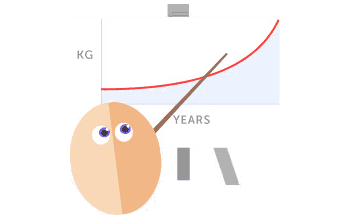Log in to view your messages, post comments, update your blog or tracker.
16 posts
Page 1 of 2
Excellent idea!
Great idea
There's Varady's 2013 paper to add, and I think there was one if not two in 2012?
There's Varady's 2013 paper to add, and I think there was one if not two in 2012?
yep, there's plenty to add
added some more
This is looking excellent Phil!
Are you going to add results other than weight loss, where available? For example, cholesterol, BP, fasting blood glucose, insulin resistance etc?
I came across another study today, which stupidly I didn't save the details of, but they were looking at the effects of a very low calorie diet (VLCD) and in one group they had them doing one day a week on the VLCD, which is not too far off what we are doing. So, it might be worth searching for papers on short-term VLCD too at some stage. It is frustrating searching for papers relevant to 5:2 because they don't always call it intermittent fasting. So we have intermittent calorie restriction, intermittent energy restriction and VLCD to look for as well.
Are you going to add results other than weight loss, where available? For example, cholesterol, BP, fasting blood glucose, insulin resistance etc?
I came across another study today, which stupidly I didn't save the details of, but they were looking at the effects of a very low calorie diet (VLCD) and in one group they had them doing one day a week on the VLCD, which is not too far off what we are doing. So, it might be worth searching for papers on short-term VLCD too at some stage. It is frustrating searching for papers relevant to 5:2 because they don't always call it intermittent fasting. So we have intermittent calorie restriction, intermittent energy restriction and VLCD to look for as well.
I wasn't going to add other parameters, but would be happy to give you edit rights to it if you wish to do so.
I usually use "intermittent" on its own as a search term but will be a bit more creative next time.
I usually use "intermittent" on its own as a search term but will be a bit more creative next time.
Hi Phil
I just came across this paper comparing two weeks of ADF (IF) with standard diet (SD) in normal weight male volunteers.
http://ajcn.nutrition.org/content/90/5/1244.long
Had you seen it already? It's not particularly recent (2009) but the men in the fasting group were doing 20-hour fasts every other day which is the kind of fasting period those of us who are having just one meal on fast days are aiming for.
Not surprisingly I suppose they found very little differences between the two groups at the end of the 2 weeks in terms of body weight, peripheral glucose uptake and hepatic insulin sensitivity (during a euglycaemic, hyperinsulinic clamp), lipolysis and proteolysis (the subjects were tested on a non-fasting day).
The interesting bits are where they found differences between IF and SD. First, the resting energy expenditure (REE) had decreased in the IF group by a median of 59 cal/day (range (−201–26 cal) and they calculate that, after a year such a decrease would result in a gain of around 3 kg body fat if the calorie intake was not reduced. If you look at the range, some people showed a decrease of up to 200 cals per day. This could certainly be a significant slow down for people in that bracket and might be relevant for some of our forum members who are not seeing a weight loss, don't you think? The authors suggest that:
The next interesting bit is when they looked at the signalling proteins in the insulin and mTOR signalling pathways in muscle tissue both in the basal state and during the clamp. They found differences in the IF group compared with the SD group in signalling pathways involved in storing glycogen (GSK) and in modulating nutrient signaling (mTOR). The mTOR findings are of interest because of the connection with autophagy and with cancer cell proliferation and survival as we have discussed previously.
They point out that the lack of a difference between the two groups in terms of glucose metabolism in normal weight men with normal glucose metabolism does not necessarily mean that fasting would not benefit people with impaired glucose metabolism of course and that it would be worth examining this.
Of course it is only a small, short-term study but it is interesting I think!
Thoughts?
I just came across this paper comparing two weeks of ADF (IF) with standard diet (SD) in normal weight male volunteers.
http://ajcn.nutrition.org/content/90/5/1244.long
Had you seen it already? It's not particularly recent (2009) but the men in the fasting group were doing 20-hour fasts every other day which is the kind of fasting period those of us who are having just one meal on fast days are aiming for.
The 2 wk of IF in the present study were the same as in the study by Halberg et al (1), in which the subjects fasted every second day for 20 h (Figure 1). Fasting started at 2200 and ended at 1800 the following day. The caloric intake during both diet periods was equal to avoid energy restriction with secondary effects on metabolism. Diversion of calories between carbohydrates, fat, and protein were kept equal as well. To increase comparability, the volunteers ate mainly bread, fruit, and dairy products (60% of daily energy intake) supplemented with liquid meals (40% of daily energy intake): Nutridrink [Nutricia Advanced Medical Nutrition, Zoetermeer, Netherlands; per serving (200 mL): 300 kcal, 12.0 g protein, 36.8 g carbohydrate, and 11.6 g fat].
Not surprisingly I suppose they found very little differences between the two groups at the end of the 2 weeks in terms of body weight, peripheral glucose uptake and hepatic insulin sensitivity (during a euglycaemic, hyperinsulinic clamp), lipolysis and proteolysis (the subjects were tested on a non-fasting day).
The interesting bits are where they found differences between IF and SD. First, the resting energy expenditure (REE) had decreased in the IF group by a median of 59 cal/day (range (−201–26 cal) and they calculate that, after a year such a decrease would result in a gain of around 3 kg body fat if the calorie intake was not reduced. If you look at the range, some people showed a decrease of up to 200 cals per day. This could certainly be a significant slow down for people in that bracket and might be relevant for some of our forum members who are not seeing a weight loss, don't you think? The authors suggest that:
This change in REE could not be attributed to changes in the traditional glucoregulatory hormones or adiponectin. Neither did we find changes in the thyroid hormones, but this does not take into account possible changes in intracellular differences in triiodothyronine production. The type 2 iodothyronine deiodinase has been implicated in the regulation of energy expenditure and insulin signaling (27). Whether iodothyronine deiodinase changes after IF, as described recently after short-term fasting by Heemstra et al (28), remains to be elucidated.
The next interesting bit is when they looked at the signalling proteins in the insulin and mTOR signalling pathways in muscle tissue both in the basal state and during the clamp. They found differences in the IF group compared with the SD group in signalling pathways involved in storing glycogen (GSK) and in modulating nutrient signaling (mTOR). The mTOR findings are of interest because of the connection with autophagy and with cancer cell proliferation and survival as we have discussed previously.
They point out that the lack of a difference between the two groups in terms of glucose metabolism in normal weight men with normal glucose metabolism does not necessarily mean that fasting would not benefit people with impaired glucose metabolism of course and that it would be worth examining this.
Of course it is only a small, short-term study but it is interesting I think!
Thoughts?
carorees wrote: They point out that the lack of a difference between the two groups in terms of glucose metabolism in normal weight men with normal glucose metabolism does not necessarily mean that fasting would not benefit people with impaired glucose metabolism of course and that it would be worth examining this.
I'd expect men of normal weight to have mechanisms to defend that normal weight against transient changes in food intake, and a change in REE could be one of these.
For those of us who are overweight, our problem is that our bodies also try to defend the abnormal weight. I think it's still unclear whether impaired glucose metabolism is the cause or the effect. I used to be certain it was the cause, but I'm a lot less certain about a lot of things now.
On a guess, 5:2 might be more effective than ADF for preventing downregulation of REE, simply because it gives the body less time to adapt to the caloric deficit.
And here's another interesting possibility: It might be better to randomly change the fast days than to lock into a schedule.
Edit: Is this drop in REE the elusive "starvation mode"?
Edit: Is this drop in REE the elusive "starvation mode"?
very interesting thanks . I have wondered wether keeping the body guessing by changing the duration of the fast might not also be a good idea.
very interesting thanks . I have wondered wether keeping the body guessing by changing the duration of the fast might not also be a good idea.
It's row 26 on the spreadsheet.
I'm slightly surprised that a <1% difference in REE was significant (median REE 18 cals/day different) in the basal state after the intervention, when a difference of 80 calories/day in the clamped state wasn't significant.
Unfortunately it doesn't tell us the REE at baseline, unless I overlooked it, so it isn't a drop in REE due to the fasting protocol it's a difference between two protocols (fasting and isocaloric). Where does the 59 come from ?
Even the worst case was in my "twix a day" range for REE reduction which the person concerned would need to take account of (largely by ignoring chants of "starvation mode" and simply eating less).
I'm slightly surprised that a <1% difference in REE was significant (median REE 18 cals/day different) in the basal state after the intervention, when a difference of 80 calories/day in the clamped state wasn't significant.
Unfortunately it doesn't tell us the REE at baseline, unless I overlooked it, so it isn't a drop in REE due to the fasting protocol it's a difference between two protocols (fasting and isocaloric). Where does the 59 come from ?
Even the worst case was in my "twix a day" range for REE reduction which the person concerned would need to take account of (largely by ignoring chants of "starvation mode" and simply eating less).
The fasting protocol was isocaloric!
The methods section says:
There is a table in the results section showing median REE difference was 59 cal/day (p < 0.05 compared with the SD group). It was the range of the decrease that interested me. If you consider the inaccuracy of the TDEE calculators combined with the inaccuracies in the calorie counters plus the tendency to underestimate calories consumed and add the change in REE, it is easy to see how someone could be unknowingly overeating by a Twix or more!
Are we sure we are talking about the same study? Check the full paper in the link in my post!
The methods section says:
The caloric intake during both diet periods was equal to avoid energy restriction with secondary effects on metabolism. Diversion of calories between carbohydrates, fat, and protein were kept equal as well.
There is a table in the results section showing median REE difference was 59 cal/day (p < 0.05 compared with the SD group). It was the range of the decrease that interested me. If you consider the inaccuracy of the TDEE calculators combined with the inaccuracies in the calorie counters plus the tendency to underestimate calories consumed and add the change in REE, it is easy to see how someone could be unknowingly overeating by a Twix or more!
Are we sure we are talking about the same study? Check the full paper in the link in my post!
http://ajcn.nutrition.org/content/90/5/ ... nsion.html which is Table 2 from your link (isn't it ?) shows a difference of 18 kcal/day :-
REE (kcal/d) 1698 (1280–1754) 1716 (1478–1901)
no REE differences from baseline are reported that I can see.
REE (kcal/d) 1698 (1280–1754) 1716 (1478–1901)
no REE differences from baseline are reported that I can see.
That is odd. The figures in the results (59 cal/day; range −201–26 cal) don't match at all with table 2. Perhaps they are talking about from baseline (which would make more sense)! I can't see any author corrections or online comments about this discrepancy...bah!
Its a shame because the fasting regimen is of particular interest to us.
Its a shame because the fasting regimen is of particular interest to us.
The use of median concerned me too. If the median is that small then half the population saw a bigger effect and most of the other half probably saw the opposite effect.
The sooner people provide open data the better.
The sooner people provide open data the better.
16 posts
Page 1 of 2
| Similar Topics |
|---|
Who is online
Users browsing this forum: No registered users and 2 guests





